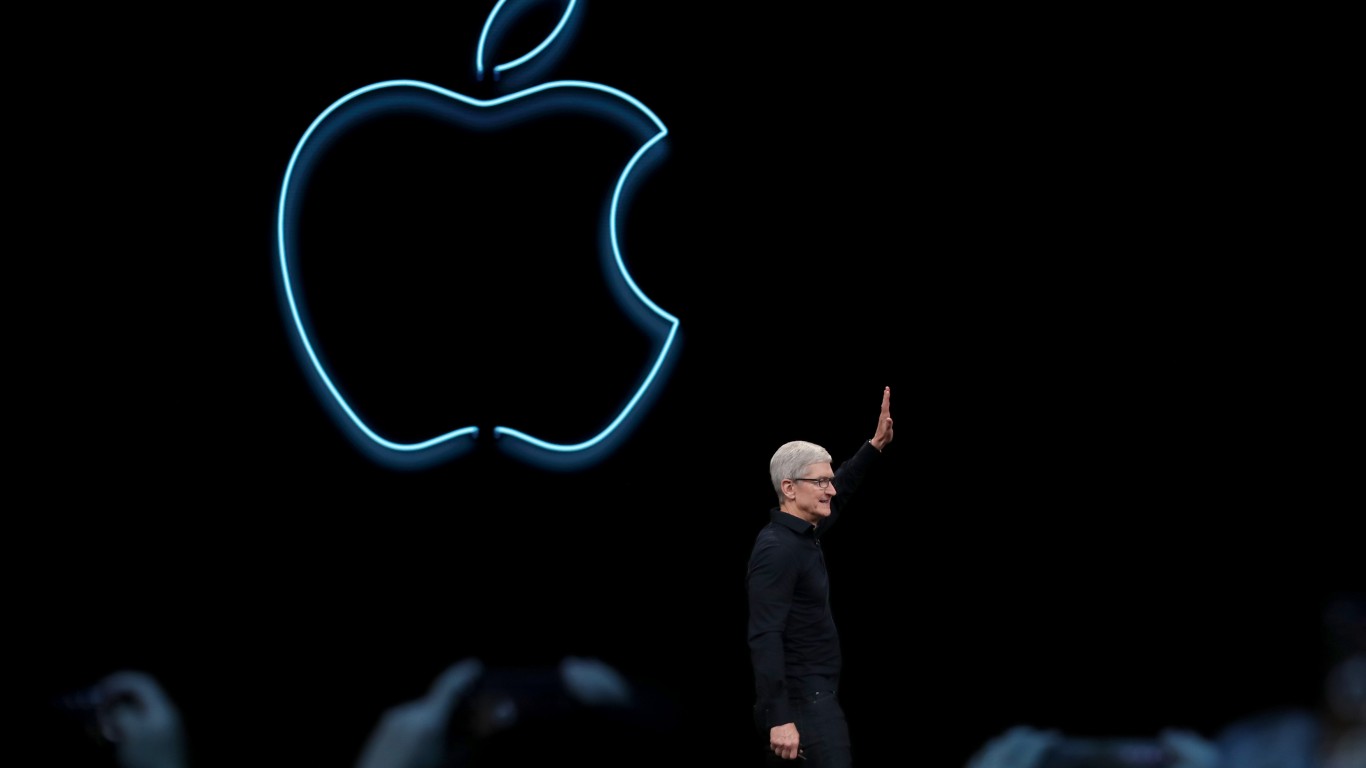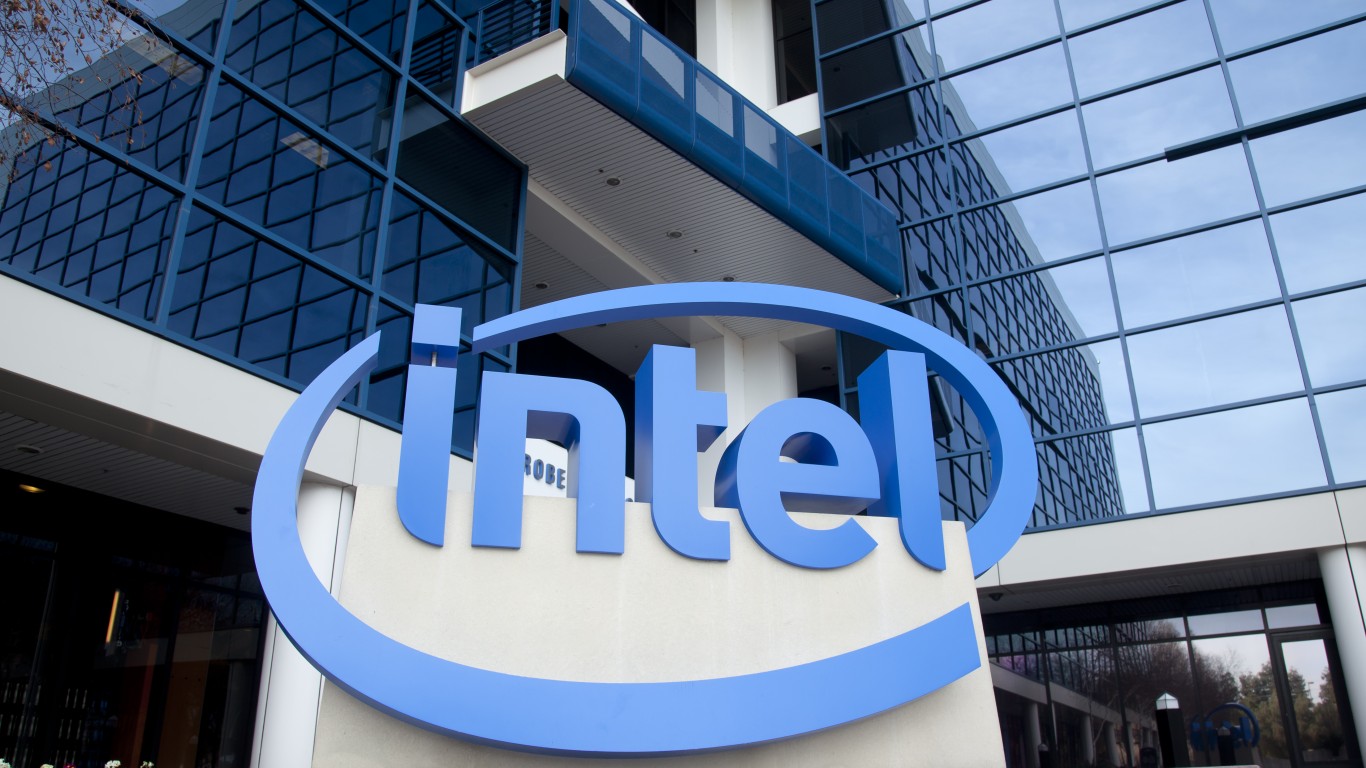
The three major U.S. equity indexes closed higher on Tuesday, following a more-or-less steady path higher after the bell. The Dow Jones industrials ended the day up 1.07%, the S&P 500 closed 1.63% higher and the Nasdaq rose 2.25%. Ten of 11 sectors closed higher, led by real estate (3.94%) and materials (2.53%). Energy (−0.05%) was the only laggard, but not by much.
Wednesday brings the monthly report on new home sales. The consensus estimate calls for 575,000 sales in September, down from August’s total of 685,000. The government report on crude oil inventories will be released later in the morning. Late Tuesday, the American Petroleum Institute reported an inventory build of more than 4.5 million barrels for the week. Of that total, 3.4 million came from the Strategic Petroleum Reserve. The API also reported that gasoline inventories fell by about 2.3 million barrels and distillate inventories rose by 635,000 barrels.
The three major indexes traded lower in Wednesday’s premarket session.
After U.S. markets closed Tuesday, Google parent Alphabet missed on both the top and bottom lines, and the search engine giant said it is realigning resources to focus on high-growth priorities. Shares traded about 6% lower in Wednesday’s premarket.
Microsoft beat adjusted earnings per share (EPS) and revenue estimates. Like Alphabet, Microsoft is sharpening its focus and “managing our cost structure.” The company’s Azure cloud business is forecast to post lower revenue growth in the current quarter, and that pushed the stock down about 6% early Wednesday.
Enphase beat on both the top and bottom lines and raised fourth-quarter revenue guidance. Shares traded up about 5.8% Wednesday morning.
Visa also beat top-line and bottom-line estimates. The financial services giant also authorized a new $12 billion buyback program and raised its dividend by 20%. Shares traded up by nearly 2%.
Before markets opened Wednesday morning, Boeing missed on both the top and bottom lines. The aircraft maker posted a loss of $3.3 billion in the quarter. Free cash flow is on track to turn positive by the end of the year. Shares traded down more than 1%.
Bristol-Myers Squibb posted better-than-expected EPS and revenue and reaffirmed fiscal year guidance. Shares traded down about 0.5%.
Kraft Heinz beat estimates on both the top and bottom lines and reaffirmed full-year organic sales growth in the high single digits. Shares traded up 1.8% in Wednesday’s premarket.
After markets close Wednesday, Antero Resources, EQT, Ford and Meta Platforms will report quarterly results. Look for Altria, Cameco, Caterpillar and McDonald’s to report first thing Thursday morning.
Here is a preview of what analysts are expecting to hear from these five companies on Thursday afternoon.
Amazon
Since putting up a 52-week high in mid-November last year, shares of Amazon.com Inc. (NASDAQ: AMZN) have dropped by more than 34%. Over the past 12 months, shares are down nearly 28%. Tuesday evening’s report from Microsoft on lower growth for its cloud business cost Amazon a premarket loss of nearly 4% on Wednesday. Amazon’s AWS cloud has been among the fastest-growing businesses for the e-commerce mega-cap, and a slowdown here may be only partially offset by the company’s still-young ad business.
All but two of 51 analysts covering Amazon stock have a Buy or Strong Buy rating. Of the holdouts, one rates the shares at Hold and the other at Strong Sell. At a recent price of around $120.60 a share, the upside potential based on a median price target of $168.10 is 39.4%. At the high price target of $270.00, the upside potential is about 124%.
Analysts are looking for third-quarter revenue of $127.49 billion, which would be up 5.2% sequentially and 15.0% higher year over year. Adjusted EPS are expected to be $0.21, compared to a loss of $0.20 per share in the prior quarter. That is down by about a third year over year. For the full 2022 fiscal year, EPS are expected to come in at $0.03, down 99%, on sales of $520.76 billion, up 10.8%.
Amazon stock trades at about 52.6 times expected 2023 EPS and 31. times estimated 2024 earnings of $2.29 per share. The stock’s 52-week trading range is $101.26 to $188.11. Amazon does not pay a dividend. Total shareholder return over the past 12 months was negative 27.4%.
Apple
Of all the so-called tech mega-caps, only Apple Inc. (NASDAQ: AAPL) is showing a share price increase for the past year. And it is a bump of just 2.5%. For the year to date, the share price is down by nearly 14%.
On Tuesday, the company raised prices for its Apple Music and Apple TV+ subscription services and made changes to its advertising policies in the App Store. Apple also tightened requirements for NFTs and crypto apps that put the digital assets squarely under the same fee structure as any other app. This change, while it may help offset so-so sales of iPhone 14, may set regulators in the United States and Europe on the company’s trail again for anti-competitive practices.
Of 44 analysts covering Apple, 35 have a Buy or Strong Buy rating and another eight rate the shares at Hold. At a share price of around $152.30, the upside potential based on a median price target of $185.00 is about 21.5%. At the high price target of $220.00, the upside potential is 44.5%.
Analysts expect the Dow component to report fiscal 2022 fourth-quarter revenue of $88.77 billion, up 7% sequentially and by 6.5% year over year. Adjusted EPS are expected to come in at $1.27, up 5.8% sequentially but down 7.7% year over year. For the full fiscal year that ended in September, analysts expect the company to report EPS of $6.11, up 8.9%, on sales of $392.78 billion, up about 7.4%.
Apple stock trades at aabout 24.9 times expected 2022 EPS, 23.6 times estimated 2023 earnings of $6.44 and 22.3 times estimated 2024 earnings of $6.84 per share. The stock’s 52-week range is $129.04 to $182.94. Apple pays an annual dividend of $0.92 (yield of 0.6%). Total shareholder return for the past 12 months was 3.1%.
Intel
Shares of Intel Corp. (NASDAQ: INTC) have dropped by more than 44% over the past 12 months. Chipmakers are having a tough time persuading investors that the decline in PC sales is not life-threatening. After the boost in sales from the pandemic, almost anything would look bad.
Sales have been trailing lower since late 2020, however, and analysts are looking for a year-over-year decline of some 15% in Intel’s total revenue, in line with IDC’s report of a September quarter drop in industrywide PC sales of 15%.
The company raised around $860 million Wednesday morning with the IPO of its Mobileye self-driving unit.
Of 40 analysts covering the stock, just nine have a Buy or Strong Buy rating. There are 20 Hold ratings and 11 ratings of Sell or Strong Sell. At a share price of around $27.40, the implied upside based on a median price target of $32.00 is about 16.8%. At the high target of $72.00, the implied upside is about 163%.
Third-quarter revenue is forecast at $15.31 billion, down 0.1% sequentially and 18.2% lower year over year. Adjusted EPS are forecast at $0.33, up 13.2% sequentially but 80.7% lower year over year. For the 2022 fiscal year, Intel is expected to report EPS of 2.17, down 60.4%, on sales of $65.35 billion, down about 12.5%.
Intel stock trades at aabout 12.7 times expected 2022 EPS, 10.9 times estimated 2023 earnings of $2.51 and 9.8 times estimated 2024 earnings of $2.80 per share. The stock’s 52-week range is $24.59 to $56.28. Intel pays an annual dividend of $1.46 (yield of 5.33%). Total shareholder return over the past year is negative 42.7%.
T-Mobile
T-Mobile US Inc. (NASDAQ: TMUS) posted its 52-week high in late August. In July 2021, the company posted an all-time high of more than $150.00, and it came within a couple of dollars of matching that six weeks ago. Over the past 12 months, the stock price has risen by more than 21%.
By comparison, share prices for main rivals AT&T and Verizon are down by 31%. Subscriber growth was a key for AT&T and is expected to perform similarly for T-Mobile. Some research has shown that parents have doubled their purchases of cell phones for six-year-old children following the May school shooting in Uvalde, Texas.
Analysts are nearly unanimously bullish on the stock, with 29 of 33 having a Buy or Strong Buy rating and three rating the shares at Hold. At a share price of around $140.60, the implied gain based on a median price target of $172.50 is about 22.7%. At the high target of $230, the implied gain is 63.6%.
Third-quarter revenue is forecast at $19.98 billion, up 1.4% sequentially and 1.8% higher year over year. Adjusted EPS are pegged at $0.50, down 74.4% sequentially and by 61.8% year over year. For the full 2022 fiscal year, analysts have forecast EPS of $2.05, down 52%, on sales of $80.82 billion, up 0.9%.
T-Mobile stock trades at about 68.6 times expected 2022 EPS, 22 times estimated 2023 earnings of $6.38 and 15.1 times estimated 2024 earnings of $9.30 per share. The stock’s 52-week range is $101.51 to $147.02. The company does not pay a dividend, and total shareholder return for the past 12 months was 21.3%.
U.S. Steel
Over the past 12 months, shares of United States Steel Corp. (NYSE: X) have lost nearly 13% of their value. For the year to date, shares are down 9.4%, after posting a loss of nearly 30% as recently as early July. Rebar steel prices have dipped nearly 30% since May. Flat-rolled steep prices dropped 15% in the third quarter, leading U.S. Steel to lower its guidance last month. Demand has dropped from both the construction and auto industries, and expectations for the quarter have been reduced to reflect that.
Of 10 brokerages covering the shares, only three have a Buy or Strong Buy rating. Another five rate the stock at Hold. At a price of around $21.40 a share, the upside potential to a median price target of $22.25 is about 4%. At the high target of $37.00, the upside potential is nearly 73%.
Third-quarter revenue is expected to come in at $4.99 billion, down 20.6% sequentially and down 16.3% year over year. Adjusted EPS are forecast at $1.99, down 48.5% sequentially and by 62.9% year over year. For the 2022 fiscal year, analysts expect U.S. Steel to post EPS of $9.70, down 28.1%, on sales of $20.75 billion, up 2.3%.
U.S. Steel stock trades at 2.2 times expected 2022 EPS, 8.1 times estimated 2023 earnings of $2.66 and 11.8 times estimated 2024 earnings of $1.81 per share. The stock’s 52-week range is $16.41 to $39.25, and the company pays an annual dividend of $0.20 (yield of 0.93%). Total shareholder return for the past 12 months was negative 12.2%.
It’s Your Money, Your Future—Own It (sponsor)
Retirement can be daunting, but it doesn’t need to be.
Imagine having an expert in your corner to help you with your financial goals. Someone to help you determine if you’re ahead, behind, or right on track. With SmartAsset, that’s not just a dream—it’s reality. This free tool connects you with pre-screened financial advisors who work in your best interests. It’s quick, it’s easy, so take the leap today and start planning smarter!
Don’t waste another minute; get started right here and help your retirement dreams become a retirement reality.
Thank you for reading! Have some feedback for us?
Contact the 24/7 Wall St. editorial team.

 24/7 Wall St.
24/7 Wall St. 24/7 Wall St.
24/7 Wall St. 24/7 Wall St.
24/7 Wall St.



